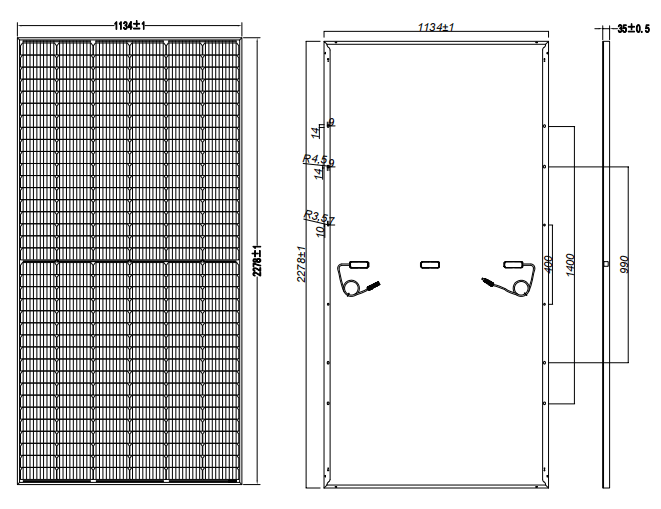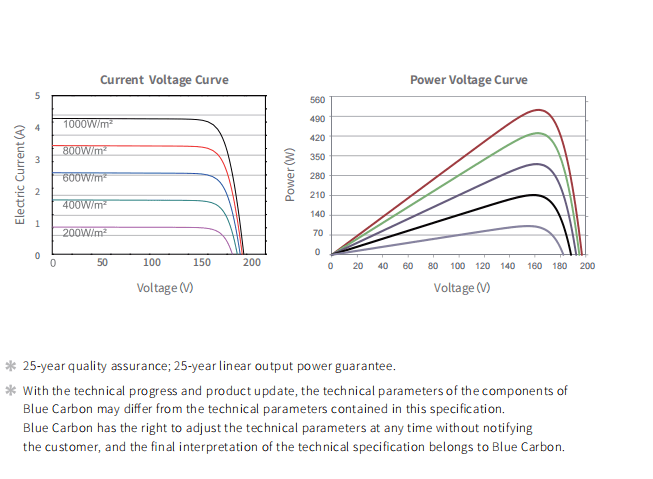
Title: Series, Parallel, or Hybrid Wiring? Unveiling the Key Design Choices for Solar System Efficiency
In the design and installation of solar systems, the wiring methods of components (such as series connection, parallel connection, or hybrid connection) directly affect the power generation efficiency, stability, and adaptability of the system. Different scenarios require different wiring solutions, and a wrong choice may lead to a significant drop in power generation. This article will analyze the working principles of these three wiring methods and their impacts on system efficiency, helping you make more scientific design decisions.
- Series Connection: Boosting Voltage and Simplifying Design
Principle: In a series connection, multiple solar panels are connected end – to – end to form a “chain – like” circuit. At this time, the total voltage of the system is the sum of the voltages of each component, and the current is determined by the output of the weakest component.
Advantages:
- The design with high voltage and low current can reduce line losses, making it suitable for long – distance transmission.
- It simplifies the wiring process and reduces the cost of wires.
Disadvantages: - Short – board effect: If a single component is shaded or fails, the current of the entire series chain will decrease.
- It has high requirements for component matching. Mixing old and new or components with different powers will lead to efficiency losses.
Applicable Scenarios: Environments with uniform lighting, no shadow obstruction, and consistent component specifications.
- Parallel Connection: Enhancing Fault – tolerance and Stabilizing Current
Principle: In a parallel connection, the positive poles of all components are connected to each other, and the negative poles are also connected to each other. The total current is the sum of the currents of each component, and the voltage remains the voltage of a single component.
Advantages:
- Strong anti – interference ability: When a certain component is shaded or damaged, other components can still work independently.
- It supports the mixing of components with different specifications, providing higher flexibility.
Disadvantages: - The design with low voltage and high current may increase line losses (requiring thicker cables).
- It requires additional equipment (such as branch connectors), which may increase costs.
Applicable Scenarios: Scenarios with local shadows, inconsistent component specifications, or those requiring high reliability.
- Series – Parallel Hybrid: Balancing Efficiency and Fault – tolerance
Principle: Combining series and parallel connections, some components are first connected in series into groups, and then multiple series groups are connected in parallel. For example, three panels are connected in series into one group, and then four groups are connected in parallel.
Advantages:
- It takes into account both high voltage and fault – tolerance, reducing the impact of a single failure point.
- It can adapt to complex lighting conditions (such as partially shaded or differently – oriented roofs).
Disadvantages: - High design complexity, requiring accurate calculation of voltage and current matching.
- It relies on more accessories (such as optimizers or micro – inverters).
Applicable Scenarios: Medium – to – large – scale systems, complex installation environments, or scenarios where maximizing power generation efficiency is required.
- Other Key Factors Affecting System Efficiency
Besides the wiring method, the following issues also need to be noted:
- Temperature Impact: High temperatures can cause the voltage of components to drop, and series systems are more sensitive to this.
- Shadow Obstruction: In a series system, a single leaf may cause a sharp drop in the power generation of the entire string, while parallel or hybrid solutions can alleviate this problem.
- Component Attenuation Differences: When mixing old and new components, parallel or hybrid solutions are more reliable.
- How to Choose the Optimal Wiring Solution?
Step 1: Analyze the Installation Environment
Check if there are shadows, orientation differences, or space limitations on the roof/site.
Step 2: Evaluate Equipment Compatibility
If the component models and powers are inconsistent, give priority to parallel or hybrid solutions.
Step 3: Calculate Costs and Benefits
Hybrid wiring may need to be equipped with optimizers, which have a high initial cost but more stable long – term benefits.
Conclusion: Optimized Design is the Core of High – efficiency Power Generation
Whether it is series, parallel, or hybrid wiring, the core goal is to maximize the utilization of light and minimize environmental interference. For home users, the hybrid solution + micro – inverter is becoming the mainstream; while large – scale power plants may reduce costs through series + string inverter. It is recommended to consult a professional designer and customize a solution based on your actual needs, so that every ray of sunlight can be converted into higher returns!

